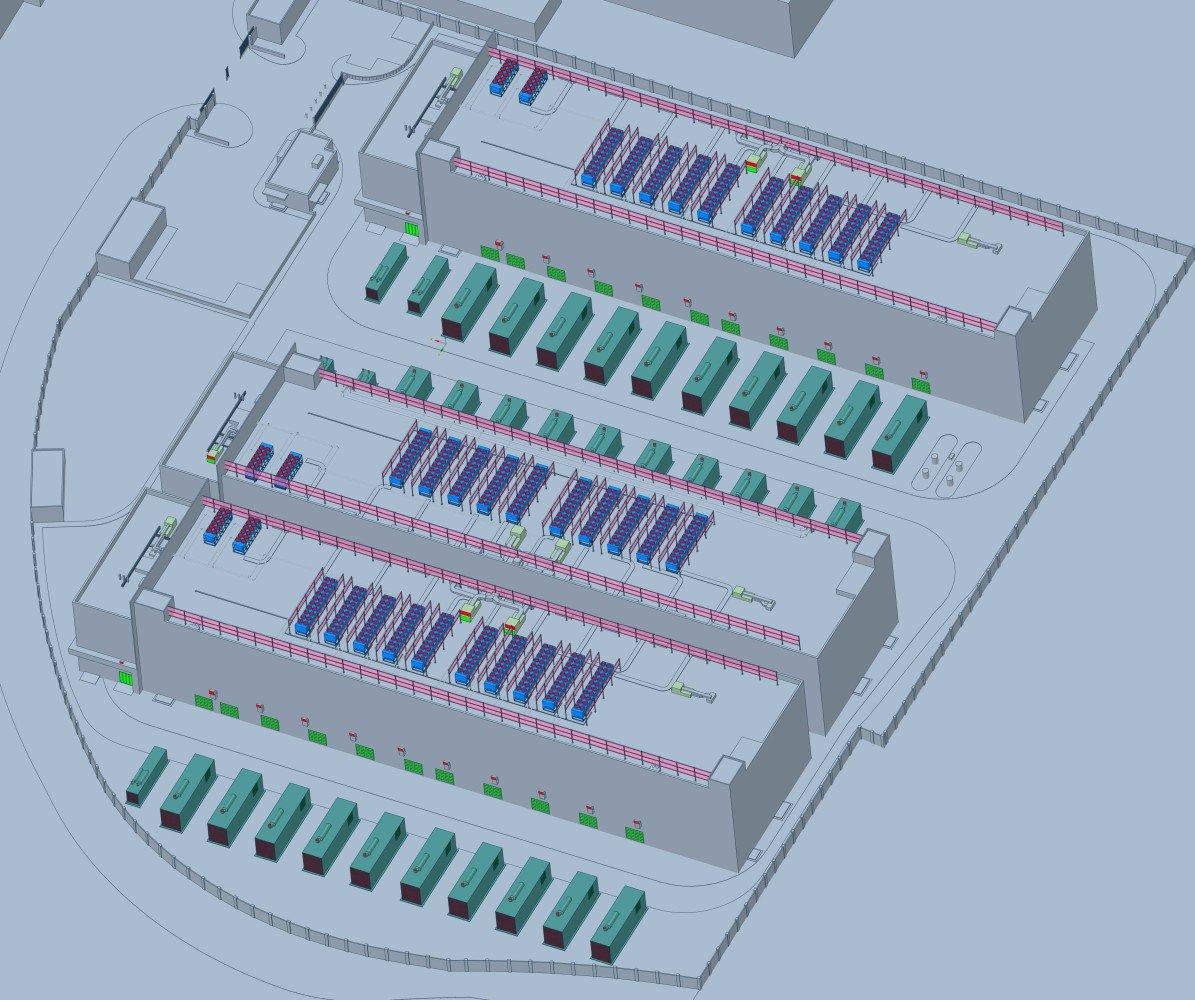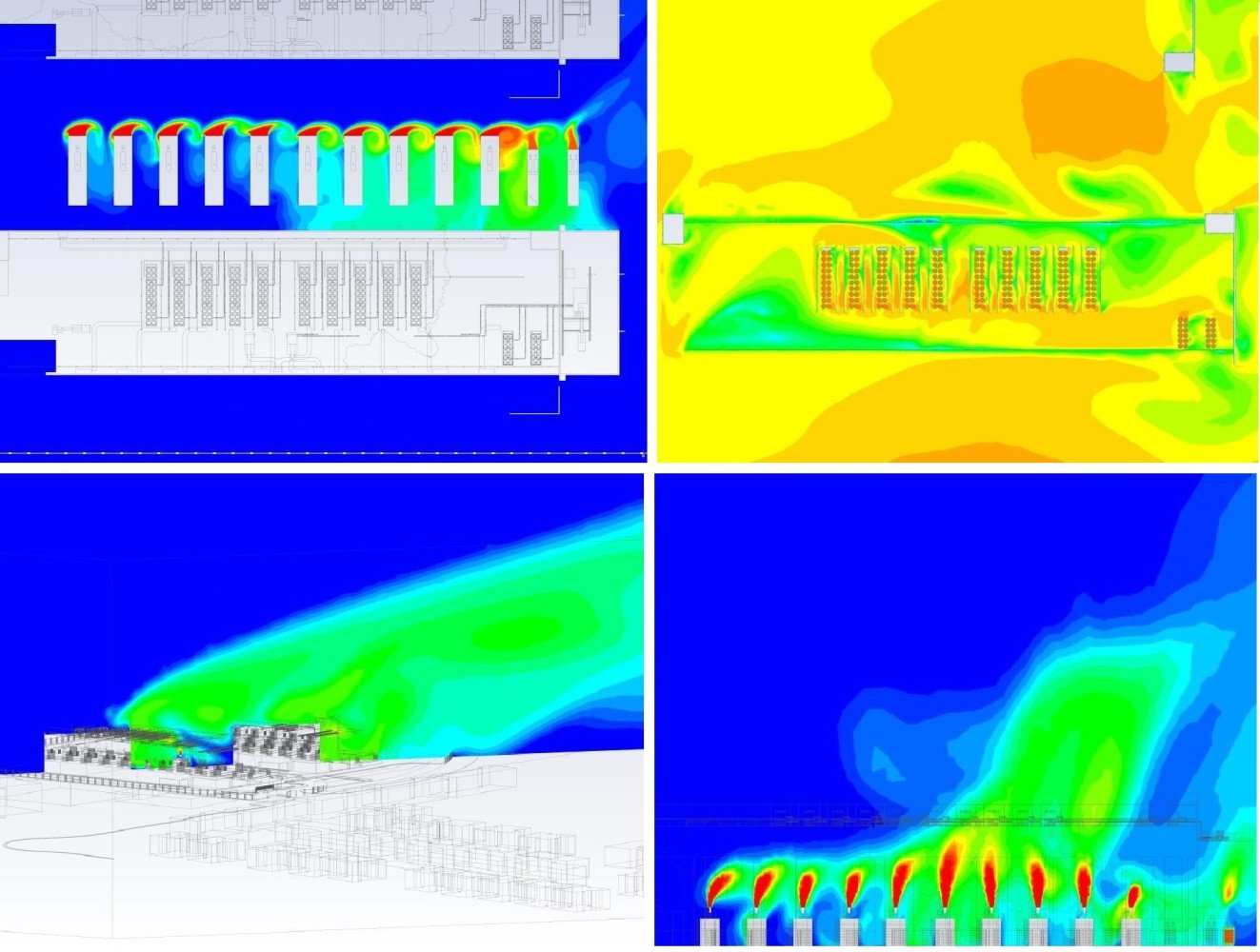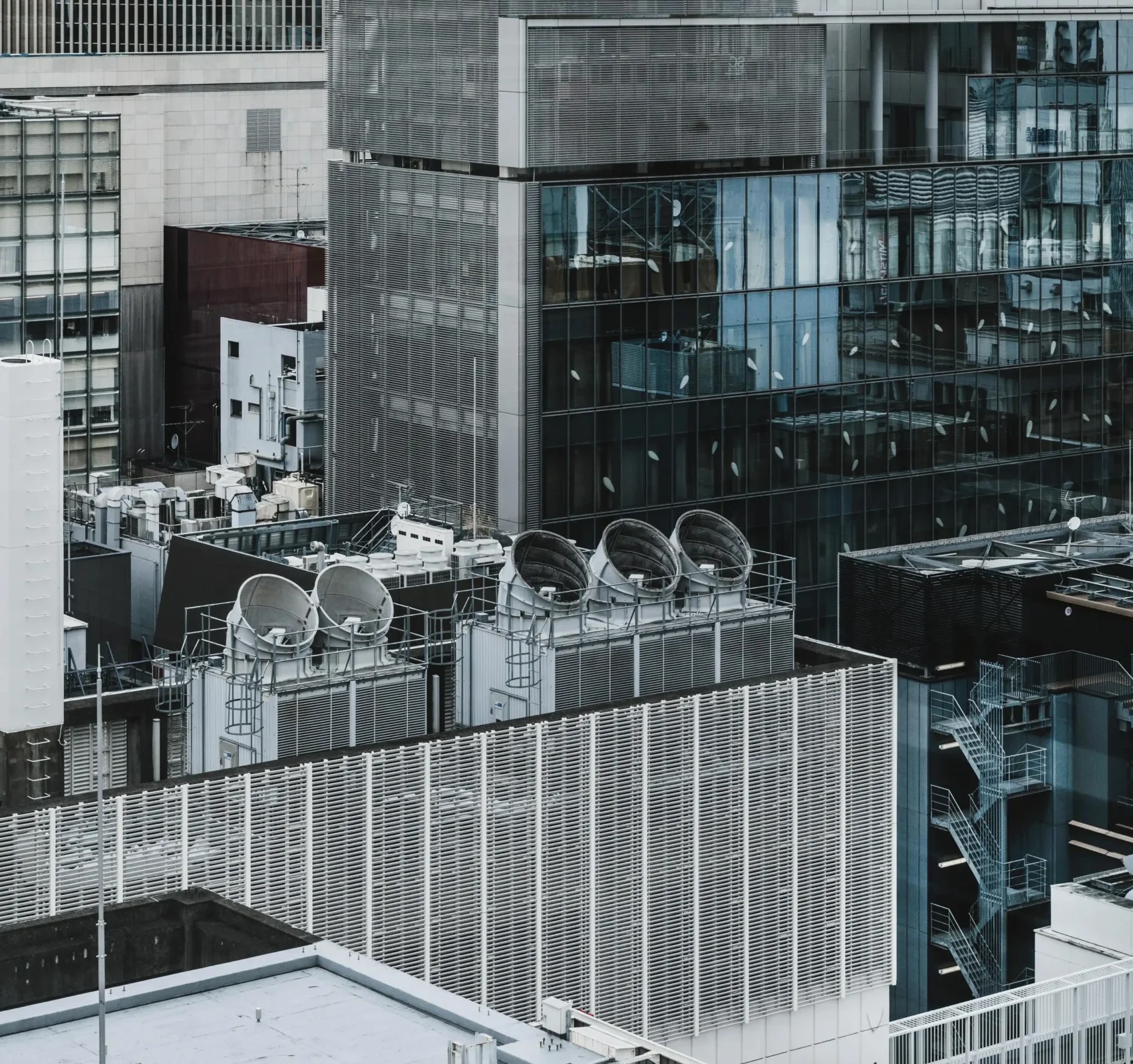Mechartes has been working on several Data Center Projects across the globe by providing consultancy services for the Internal Air Flow Distribution Study and External Air Dispersion Modelling for the yard and Mechanical Rooms.
This article will discuss our findings and insights from a computational fluid dynamics (CFD) analysis we performed for the external utility yard for one of the Data Center projects.
So let’s dive right in!
1.Introduction
Data Center facilities use chillers to cool the water used in their heating, ventilation, and air-conditioning systems. Because many servers operate close to one another, chillers must run around the clock to maintain Data Center operation. Data Centers have several mechanical units, including chillers, ODU units placed on the roof, and generators emitting hot flue gas at very high temperatures.
In the design phase, it is critical to analyze how hot air impacts the chillers’ performance and take measures to reduce it. Moreover, it is vital to study the dispersion of pollutant emissions in the nearby pedestrian area by analyzing flue gas properties, including NOX and SOX levels.
For various wind directions and ambient conditions, engineers can study the performance of the chiller and mechanical units using CFD analysis.
2. Objective
The main objective of the CFD analysis for the Project owners/contractors/design consultants is to check the following:
i. To determine if “hot air rejected from chiller units & generators” enters the inlets of chiller units & generators, and if so, what is the increase in temperature due to re-circulation of air.
ii. To determine if the chiller units are receiving proper air circulation.
iii. To study the velocity & temperature profiles around the chillers units & generator sets.
iv. Re-circulation calculation for each equipment.
v. Assessing the impact of NO2 emissions from the generator exhaust on adjacent residential buildings and determining whether the concentrations of NO2 are within the acceptable limit of 0.2 ppm (400 mg/Nm3 for 1 hour of exposure).
In addition, we ran CFD simulations under different wind and ambient conditions.
3. Modelling
Per the inputs and design drawings received, we prepared a detailed 3D model of the complete in the CFD Software.
A CFD Wind tunnel is created by modelling the nearby buildings. In the data center building all the obstructions including the major pipes, wall obstructions, equipment’s were also modelled. Chillers, mechanical units, generators, and air intake louvers were modeled in detail .
Appropriate boundary conditions, including the intake, discharge temperature and velocity from all the equipment, were considered for the study. The wind and ambient conditions were chosen for the work per the project requirement and site location.

4. Conclusion
Upon completion and approval of the 3D model, a steady-state CFD Simulation was performed to study the velocity, temperature and re-circulation on each piece of equipment.
It was observed from the study that there was a considerable increase in temperature at the inlets of the chillers and other mechanical units, which had an impact on the performance. The recirculation calculations found that nearly 5 to 50% of air recirculated. This was mainly due to the movement of hot air from the generator and the chiller outlets towards the inlets of the chiller units.
It was also observed from the CFD results that the NO2 emission from generator exhaust affected the Data Center building premises and high-rise buildings, and the NO2 levels were higher than the acceptable limits.

Contour plots of Temperature, Velocity and NO2
5. Recommendation
In order to prevent the effect of high-temperature generator discharge air moving toward the inlets of generators, chillers, and other equipment, revised CFD studies were conducted with the installation of vertical ducts to leave the discharge & exhaust air at a higher level from the ground.
To prevent hot air emitted from the chiller discharge from returning to their inlets of the chiller and reduce recirculation, canopies were constructed between them.
We at Mechartés focus on providing accurate simulation results with a professional engineering approach. Our biggest strength is our team of young, passionate engineers who work as a close-knit team.
Feel free to share your comments and observations at srihari@mechartes.com or leave me a message on LinkedIn. Comments are also welcome!

